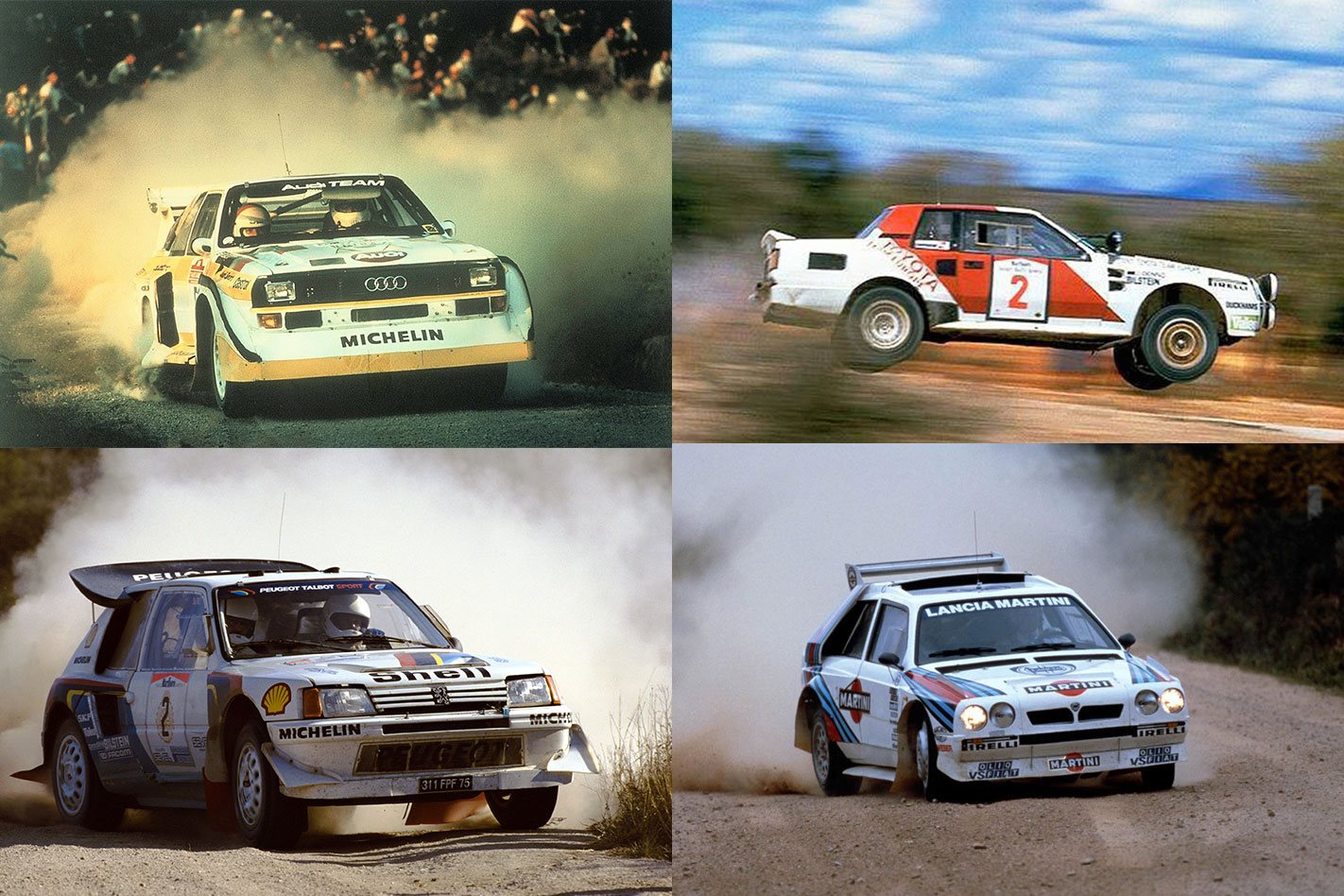It was 1985 that saw the Group B arms race truly explode.
Money was no object. Audi tested for 14 days straight ahead of the 1985 San Remo rally, flying new parts in by private plane; on rallies service crews would follow the cars in helicopters, ready to tend these highly-strung thoroughbreds.
Speeds rose incredibly quickly and with it the strains on the crews. Unlike today’s sprints, rallies could consist of over 50 stages and run through the night. In a 150kW Ford Escort that’s a tough test, in a 400kW Group B supercar it stretched the crews beyond the limits of human endurance.
Combine this with the category’s immense popularity, resulting in hundreds of thousands of spectators lining the narrow stages, and the whole scenario was a powder keg waiting for a spark. The video below is a graphic illustration of what the drivers faced as they flew through crowds of “soft trees”.
On the 1985 Monte Carlo, Ari Vatanen crashed into the crowd, breaking a spectator’s leg and later that year Lancia driver Attilio Bettega was killed in Corsica in an accident in his 037, but the truly shocking event took place on the 1986 Rally of Portugal.
Local driver Joaquim Santos was forced to swerve around spectators in the road, losing control of his Ford RS200 and ploughing into the crowd, killing three and injuring more than thirty. All the factory teams withdrew from the event and Audi quit completely.
The final straw came two events later, again in Corsica, when Henri Toivonen and his co-driver Sergio Cresta were killed after their Lancia Delta S4 left the road and exploded. The FIA decreed that 1986 would be the final year of the Group B regulations.
Audi Quattro S1 E2 – 2.1-litre 5cyl turbo, 410kW, 1 win
The car that typified the wild excesses of Group B was ironically the least successful of all the ‘monsters’.
Audi threw everything at the S1 E2: the radiators were in the boot to counter the notoriously nose-heavy weight distribution, wings provided huge downforce, the 2.1-litre turbo five was wound up to 410kW, there were water-cooled brakes and even a dual-clutch gearbox towards the end of its life.
It was so fast that Walter Rohrl’s engineer refused to ride in it; with the PDK gearbox Audi recorded a 10.8sec quarter mile time. Despite its incredible firepower, though, it would capture just one win in San Remo in 1985.
Citroen BX 4TC – 2.1-litre 4cyl turbo, 330kW, best of 6th (1986 Sweden)
Citroen was a late arrival to the Group B party, making its debut at the 1986 Monte Carlo Rally. The BX 4TC featured Citroen’s unique hydropneumatic suspension, however it only appeared three times with a best of sixth place in Sweden.
Ford RS200 – 1.8-litre 4cyl turbo, 330kW, best of 3rd (1986 Sweden)
Ford’s RS200 also appeared late, though it tasted early success with third place on the 1986 Swedish rally in just its second outing. Sadly, Group B ended before the lighter, more powerful ‘Evolution’ model had a chance to hit the stages, however the car went on to be a staple of the European rallycross scene for many years.
Lancia Delta S4 – 1.8-litre 4cyl turbo & s/c, 310-380kW, 4 wins
It took Lancia a long time to introduce all-wheel drive, but the Delta S4 was arguably the ultimate expression of the Group B rules. It was made from exotic materials and had a radical twin-charged (turbo and supercharged) engine with enormous power that made a very sinister noise.
It was also notoriously tricky to drive. Lancia’s other drivers, Markku Alen and Miki Biasion, admitted that only Henri Toivonen could extract the car’s full potential, and Toivonen himself expressed the opinion on multiple occasions that the car was almost too much to handle.
MG Metro 6R4 – 3.0-litre V6, 300kW, best of 3rd (1985 Great Britain)
MG Rover bet that its flexible, reliable naturally-aspirated V6 engine would pay dividends when the complicated turbos broke down. It bet wrong, with engine reliability ironically being the Metro 6R4’s weakest link.
However, it made one of the best noises in the history of rallying, that V6 singing to 9000rpm, and would also go on to become a successful rallycross car, while the engine became the basis for the twin-turbo 3.5-litre V6 in the Jaguar XJ220.
Peugeot 205 T16 E2 – 1.8-litre 4cyl turbo, 380-410kW, 10 wins
The challengers from Audi and Lancia might have best embodied the lunacy of Group B, but it was Peugeot that took home all the trophies, the 205 T16 winning 16 of the 29 WRC events held since its introduction and capturing the 1985 and 1986 driver’s championships.
It wasn’t perfect; its strange weight distribution meant it didn’t like jumps and the E2 version introduced water-cooled dampers to keep the overworked suspension alive, but its light weight, reliability and relative driver-friendliness made it the car to have.
Toyota Celica Twin-Cam Turbo – 2.1-litre 4cyl turbo, 245-280kW, 6 wins
Unlike its competition, Toyota stuck with rear-wheel drive to the bitter end. Its Celica Twin-Cam Turbo lacked the outright pace of its high-tech rivals, but by concentrating on the African endurance events Toyota tasted plenty of Group B success.
The Celica first won on the Ivory Coast in 1983, a feat it repeated in 1985 and 1986, and also won three straight Safari rallies from 1984-86. With up to 280kW fed through only the rear wheels, it was also extremely spectacular, cornering in huge drifts.






